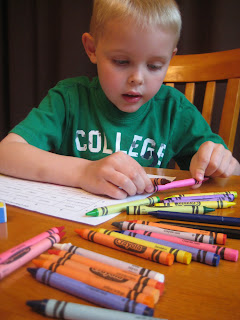The Star Wars Story Dice activity was such a hit with my son that I figured it was time to create a new story starter activity to get him writing more. I designed the Slide-A-Story activity and manipulated one of two dice to read either “UP” or “DOWN.”
The Slide-A-Story board contains four questions: who, what, when, and where. Pull tabs are threaded through the board, each with 12 different answers.
Give your son or daughter some blank handwriting paper or print some from DonnaYoung.com. Hand over the dice and get ready for a silly story to unfold.
Your child will roll the two dice four times. If the die read “UP” and “4” the child moves the tab up four times to reveal a person, thing, time, or place. Each of these answers will be incorporated into the story.
My son rolled “Astronaut,” “Tractor,” “Bed time,” and “At a museum.” What was almost more fun than creating the story was discussing the why and how behind the answers he’d ended up with (e.g. why would an astronaut be riding a tractor? How did he get in the museum? What was he doing there?).
Make Your Own
Download and print the UP/DOWN page onto sticker paper to manipulate one of your dice. The Slide-A-Story board and slides are available for download as well. Simply print on cardstock, glue to a thicker piece of paper for added sturdiness (I used a colored file folder), use an Exacto knife to cut the slits for the slides, and thread them through.
Want to make your own Slide-A-Story board and slides? A blank Slide-A-Story board is available for download (perhaps your child would love to decorate this themselves) and empty slide templates can be downloaded, too. Simply click on the red text.























